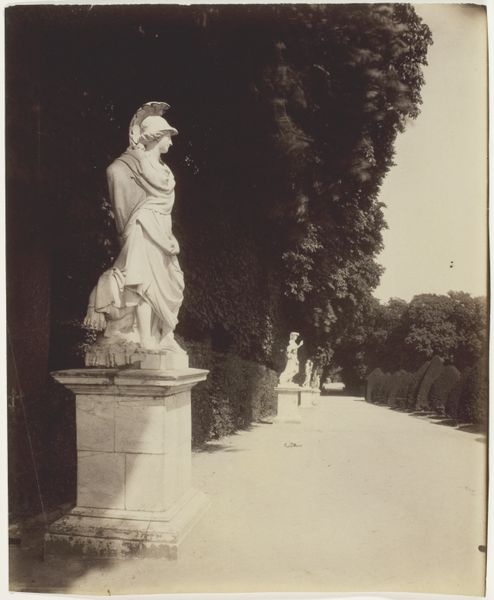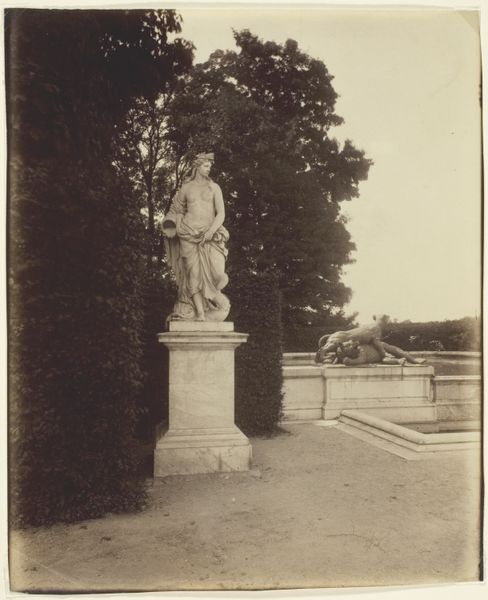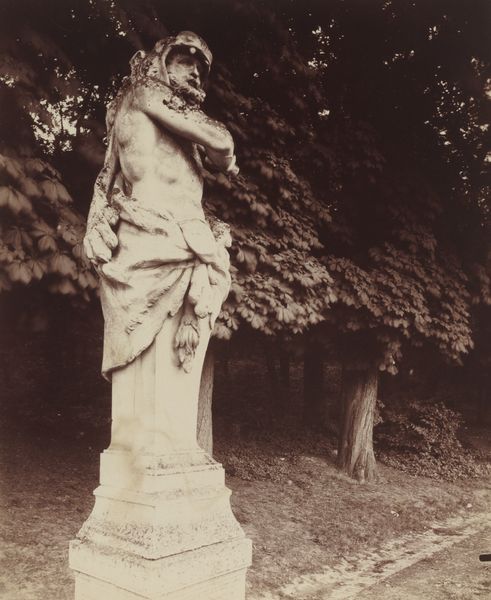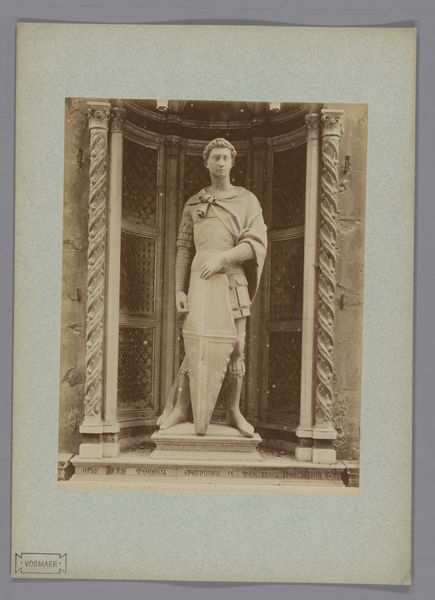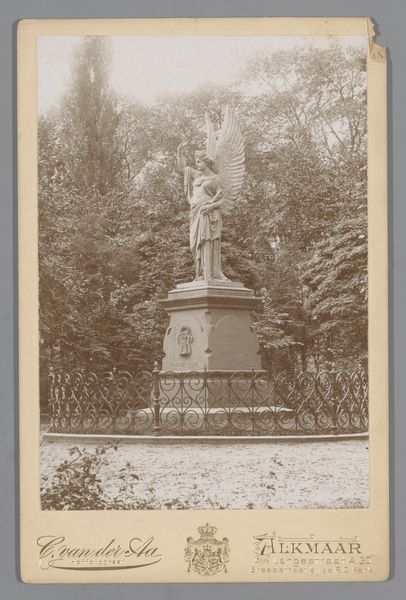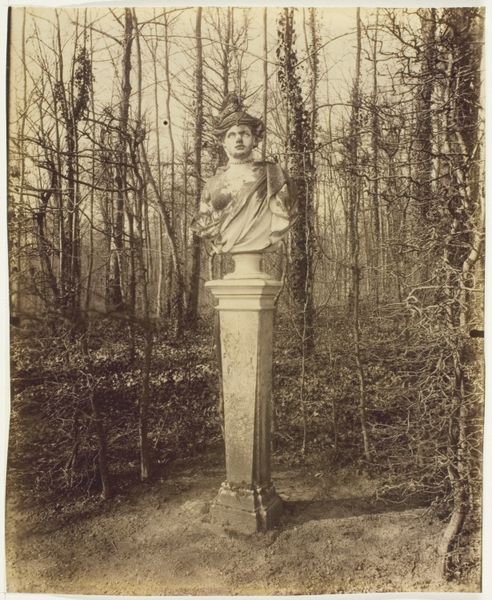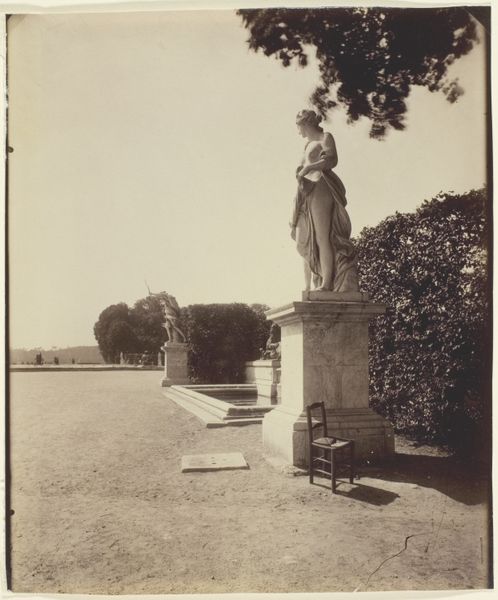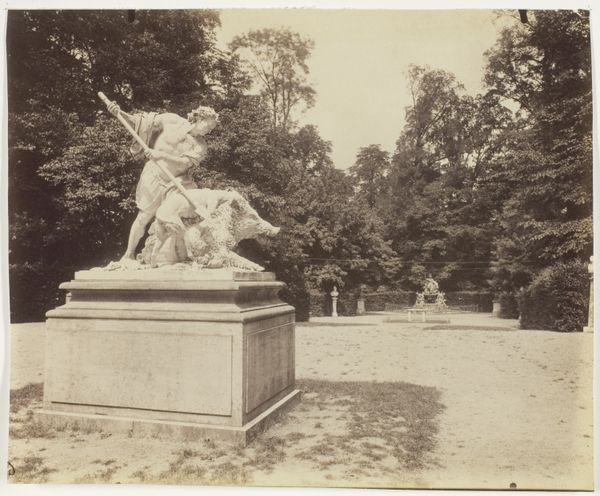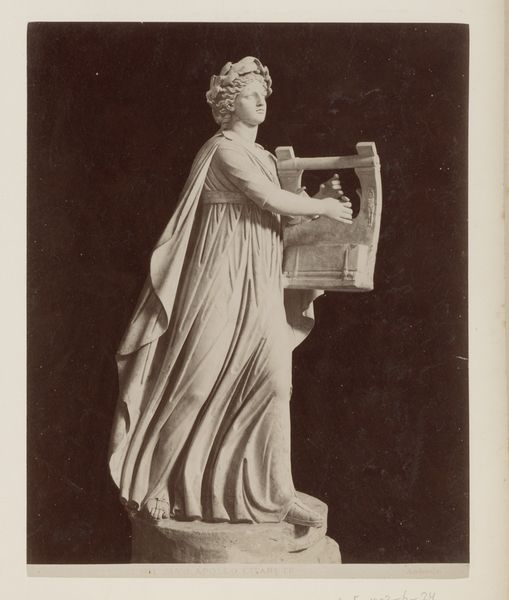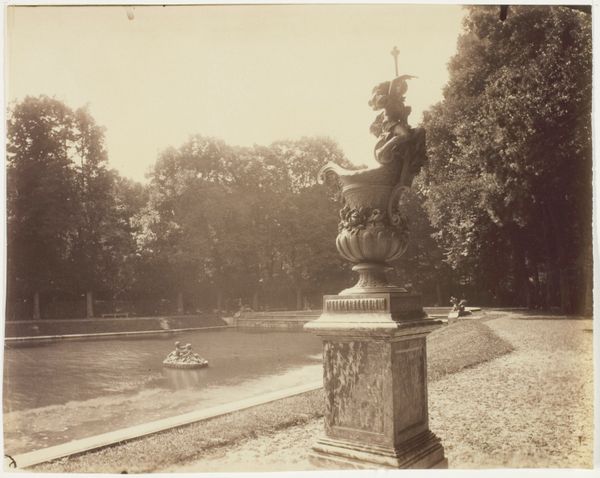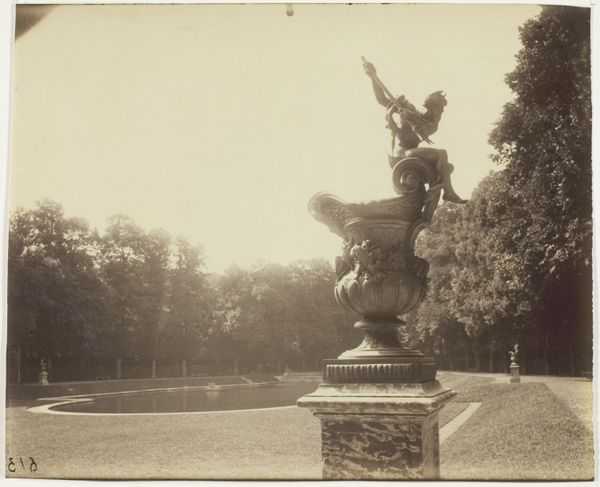
photography, sculpture, gelatin-silver-print, marble
#
portrait
#
landscape
#
figuration
#
photography
#
sculpture
#
gelatin-silver-print
#
history-painting
#
academic-art
#
marble
Dimensions: height 250 mm, width 203 mm, height 330 mm, width 510 mm
Copyright: Rijks Museum: Open Domain
Editor: We're looking at "Ovens van het Crematorium, Cimitero Monumentale, Milaan, Italië," a gelatin silver print photograph taken sometime between 1860 and 1890 by Edizione Brogi. The photograph captures a marble sculpture of a veiled woman in a cemetery. The image has a very somber, almost haunting, quality to it. What symbols or cultural meanings do you think are at play here? Curator: The setting itself speaks volumes. Cemeteries are powerful liminal spaces. The veiled figure, undoubtedly a representation of mourning or piety, carries echoes of classical antiquity blended with contemporary religious sentiment. Notice the gesture of her hands clasped. Does it denote prayer, resignation, or perhaps a quiet fortitude? Editor: I hadn't thought of it that way, seeing classical antiquity echoed here. Curator: Indeed. Think of figures like veiled vestal virgins in Roman sculpture or even depictions of the Virgin Mary. This image cleverly merges both traditions. And what of the wreaths or crown upon her head? Is it a symbol of earthly love and commitment or a promise of divine grace? Editor: So, the artist is pulling from different traditions to create a sense of universal mourning, maybe? It feels so personal, and at the same time, very formal. Curator: Precisely. It captures both individual grief and a collective, cultural understanding of death. Do you see any details that emphasize either the individual or the communal aspect more strongly? The context of this crematorium site emphasizes transformation, as in cremation; that symbol combined with the symbols in the sculpture of Cova Chierichetti suggest both an individual and shared cultural response to life and death. Editor: I suppose I was mostly struck by the sculpture, overlooking the importance of the location to add cultural weight and historical references to this artwork. It makes the piece even more multi-layered. Curator: Agreed. By exploring these visual and historical links, we start to appreciate how photographs are documents, records, art and a potent repository of collective memory.
Comments
No comments
Be the first to comment and join the conversation on the ultimate creative platform.
